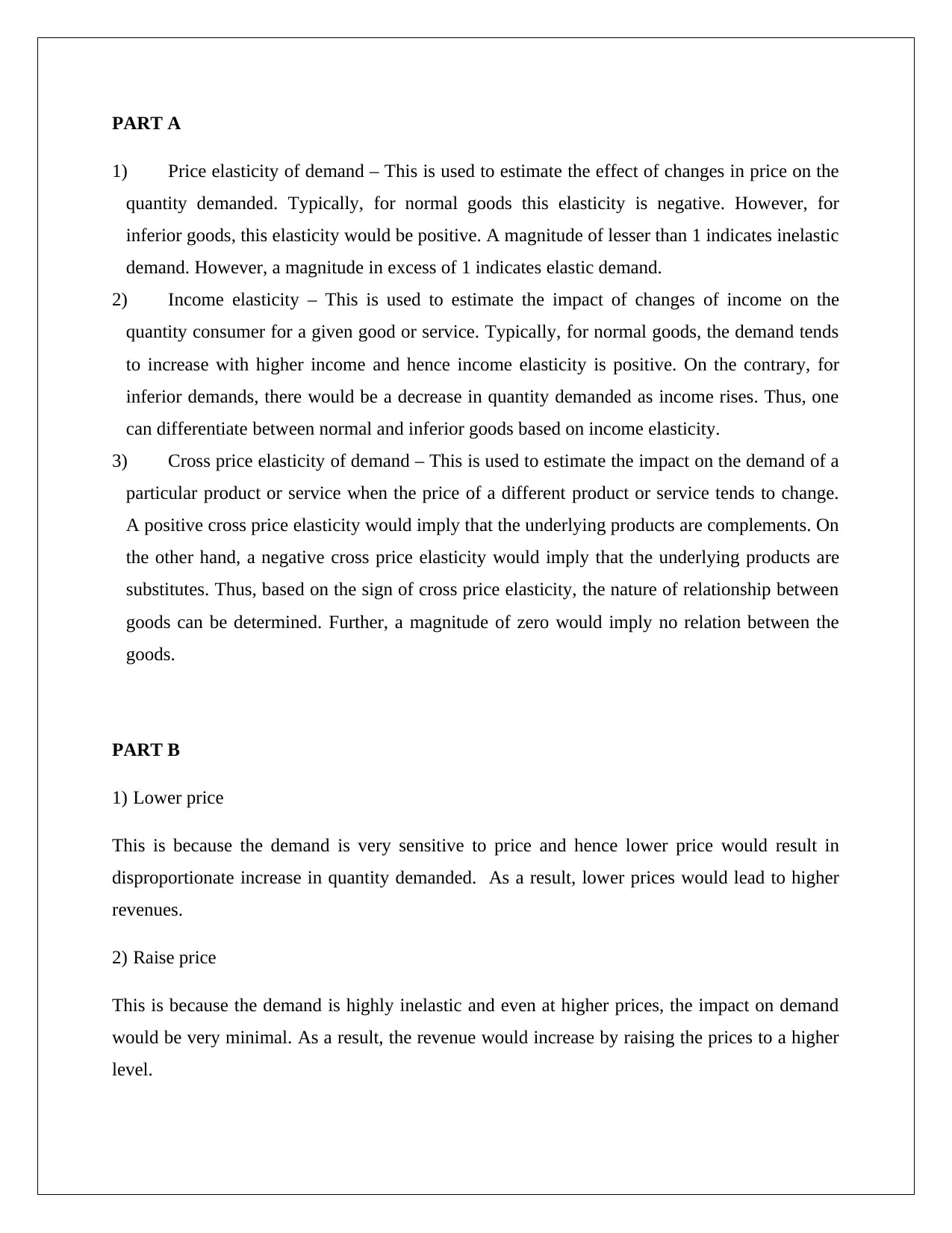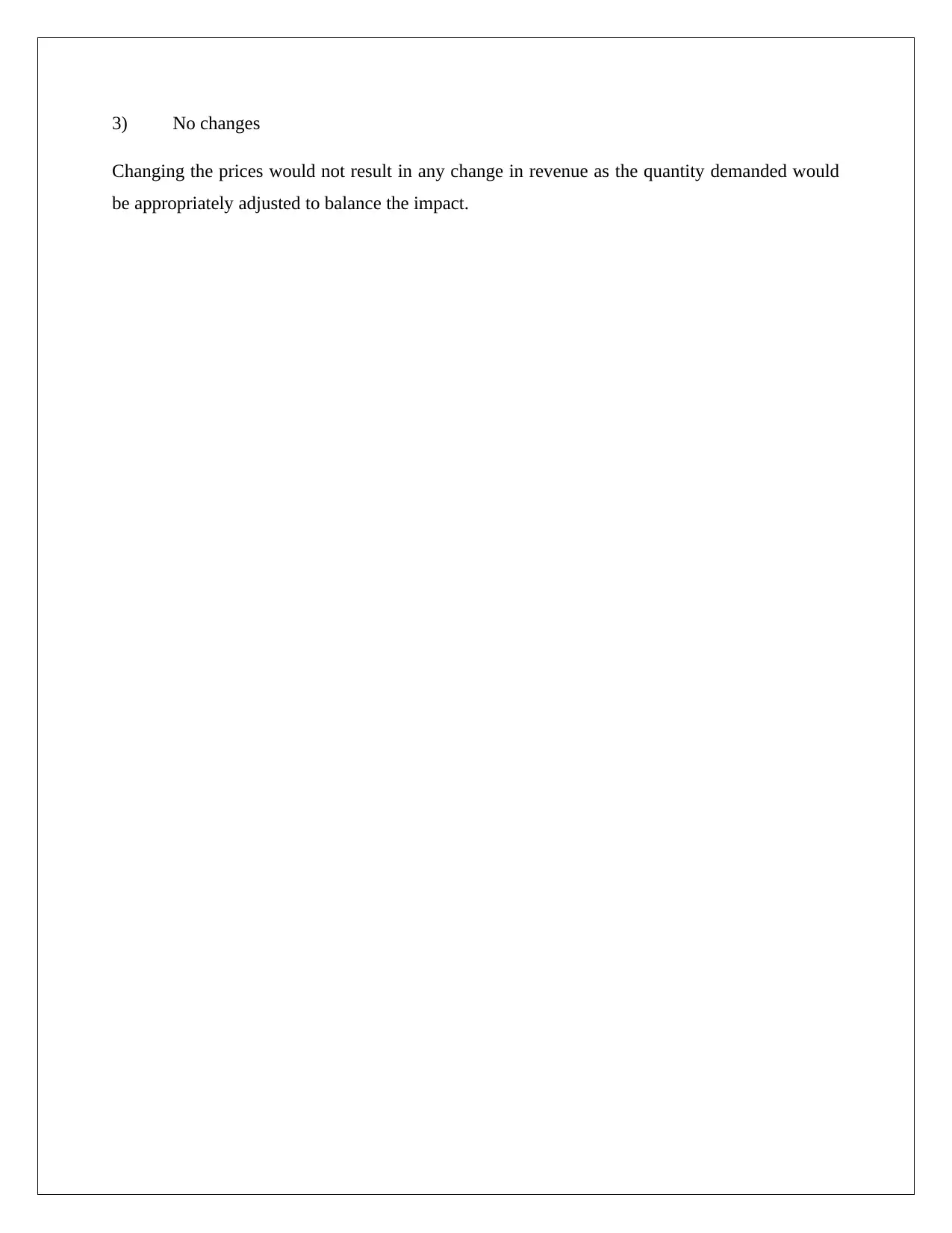Economics: Price Elasticity and Revenue Implications Assignment
VerifiedAdded on 2023/01/19
|2
|370
|20
Homework Assignment
AI Summary
This assignment delves into the core concepts of price elasticity, income elasticity, and cross-price elasticity. It examines how these elasticities influence revenue generation for businesses. The assignment explores the impact of price changes on the quantity demanded, distinguishing between elastic and inelastic demands. It also covers how income changes affect the demand for normal and inferior goods. Furthermore, the assignment discusses cross-price elasticity and its implications for substitute and complementary goods. Finally, the assignment provides insights on how businesses can leverage these concepts to make informed decisions about pricing strategies. It provides a framework for understanding how price adjustments can be optimized to maximize revenue, considering different scenarios based on the elasticity of demand.
1 out of 2








![[object Object]](/_next/static/media/star-bottom.7253800d.svg)